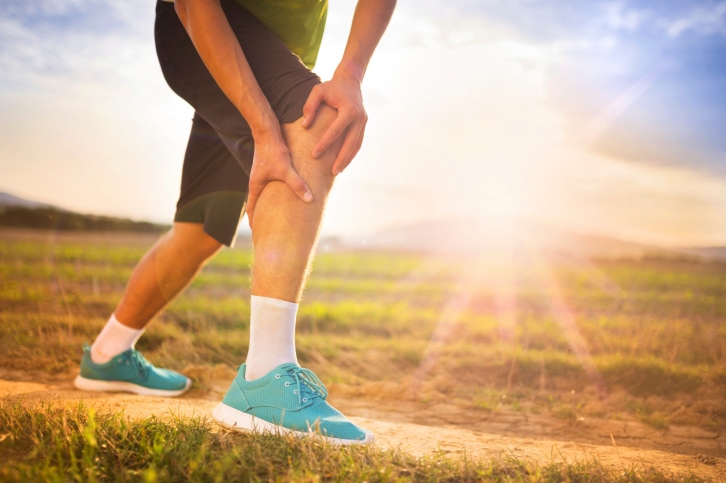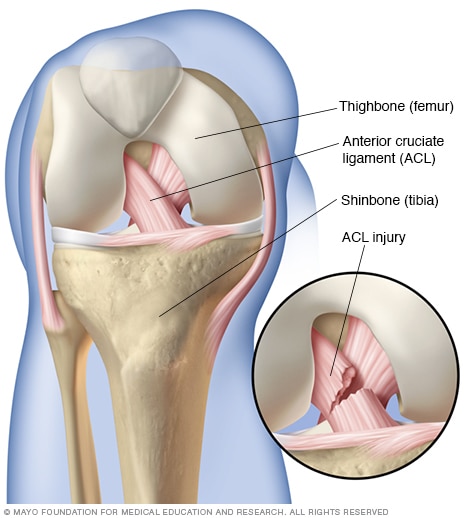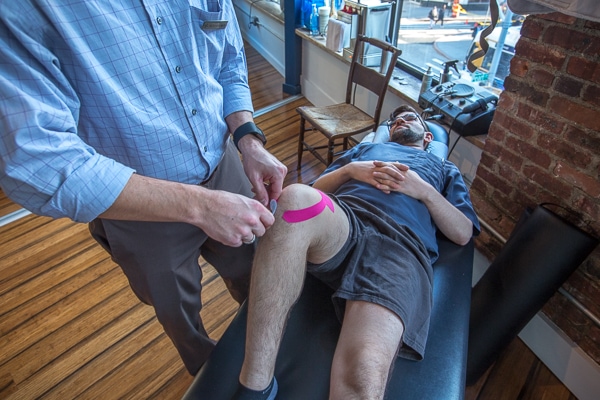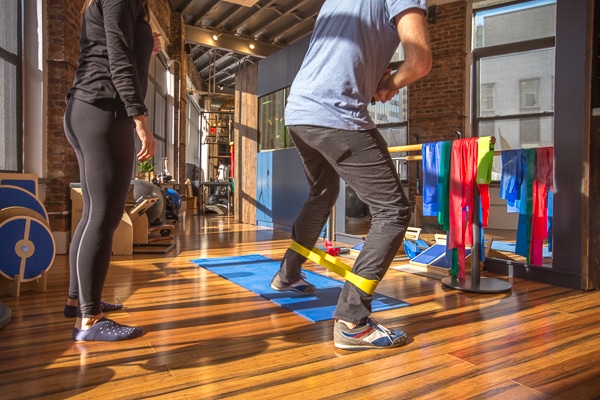Chiropractor Dr. Ken Brassington, DC reviews the most common knee injury – the dreaded anterior cruciate ligament (ACL) tear, and the treatment methods used to heal it. Knee pain caused by ligament tears requires professional medical attention for proper healing. The team at Physio Logic use a structured program called the ‘Phases of Care’ to track a patient’s progress to ensure short-term as well as long-term pain relief and injury prevention.
Many of us have undoubtedly experienced an episode of knee pain or soreness from exercising or playing sports at some time in our lives.
Hopefully the episode was transient and your body was able to adapt and recover with no long term negative consequences or re-occurrence. Many of us perhaps have not been so fortunate.
Sports injuries, particularly to the ligaments of the knee, are on most everyone’s radar whether you are actively playing, training in a particular sport, or just a fan of professional sports.
What is the Most Common Knee Ligament Injury? How and Why Does It Happen?
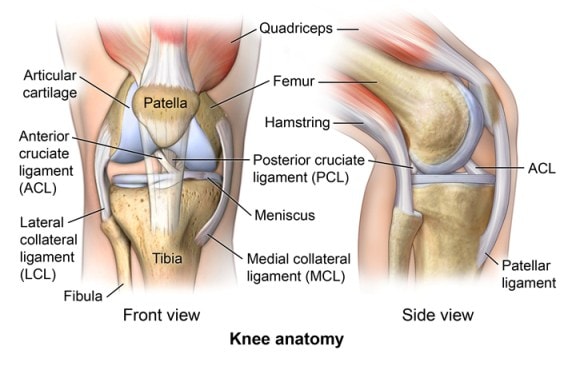
Your knee contains quite a bit of important anatomy that can either work very well for you or go terribly awry. Hinge joints are inherently stable joints and like to bend (flex) or straighten (extend) primarily but are relatively vulnerable to twisting movements, especially sudden forceful ones.
The ligaments of the knee essentially act like glue, ropes or walls keeping the bones connected so that your muscles can move them for walking, running, and jumping.
It’s widely agreed upon that of the ligaments of the knee the most commonly injured is the Anterior Cruciate Ligament (ACL).
ACL injury most commonly occurs in activities or sports that require stopping to quickly change directions, especially while running. The ACL prevents the Tibia from gliding forward on the femur and therefore if the forces of a sudden twisting movement are strong enough the ligament will be overstretched and tear.
Ligament injury is considered a sprain and it ranges in severity from mild over stretching of the individual fibers of the ligament to a complete tear or separation.
How Do You Treat a Knee Ligament Tear?
Fortunately, not all ligament tears require surgery and quite often surgery is a choice based upon how much demand you plan to place on your knee in the future.
ACL injuries are most commonly repaired surgically, particularly among athletes.
Medial Collateral ligament (MCL) and Posterior Cruciate Ligament (PCL) tears require surgery less frequently. Quite often knee ligament injuries respond very well to conservative care emphasizing a course of manual therapy and rehabilitation exercise focused on strengthening the muscles that actively support, stabilize, and move the knee.
At Physio Logic we divide this progression into structured phases of care incorporating specific soft tissue treatment, gentle joint mobilization, and individualized rehabilitation exercises.
The end goal is restoration of function with symptom relief as an important first step.
What Role Does the Chiropractic Team at Physio Logic Play in Healing Knee Ligament Tears?
The Chiropractors at Physio Logic have specialized post-graduate training in specific soft tissue manipulation techniques that facilitate the proliferation of cells which aid in ligament healing (fibroblasts). This is particularly true of the more superficial ligaments of the knee such as the Medial Collateral ligament (MCL).
We also apply these techniques to the supportive and stabilizing musculature of the knee and the soft tissue capsule that surrounds the bony part of the joint.
These approaches can enhance the overall rehabilitation process local to the knee joint when it has a ligament injury.
While local treatments to the knee are essential for maximizing healing potential, it is also important to evaluate and treat any joint or soft tissue dysfunction above and below the injured knee along what is defined as the kinetic chain (a series of interdependent joints). Because the Knee is often defined as a stable joint, readily injured by forceful or sudden rotation, it is crucial that the relatively mobile hip above and ankle below are functioning properly, otherwise additional stress and demand is placed upon the knee making it more vulnerable.
The Chiropractors at Physio Logic are trained in evaluation of extremity joint dysfunction and gentle manipulative treatments to restore the innate mobility of these joints in addition to those of the the spine.
How to Prevent Knee Ligament Injuries.
There is growing evidence that four main factors may contribute to a higher risk for ACL injury especially among females: Ligament dominance or under activation of muscles that help disperse forces to the knee, quadricep dominance or under activation of the hamstring and gluteal musculature, leg dominance such as a favored or stronger leg, and core muscle dysfunction.
The good news is that these four factors are addressed in a treatment program developed by the team at Physio Logic. There is growing evidence that lack of symmetrical motion is predictive of injury or re-injury particularly in athletic or active people.
At Physio Logic, our team emphasize progressive functional evaluation methods that reveal these asymmetries in joint and soft tissue mobility, not only around the knee but throughout the rest of the interdependent joints of the body.
